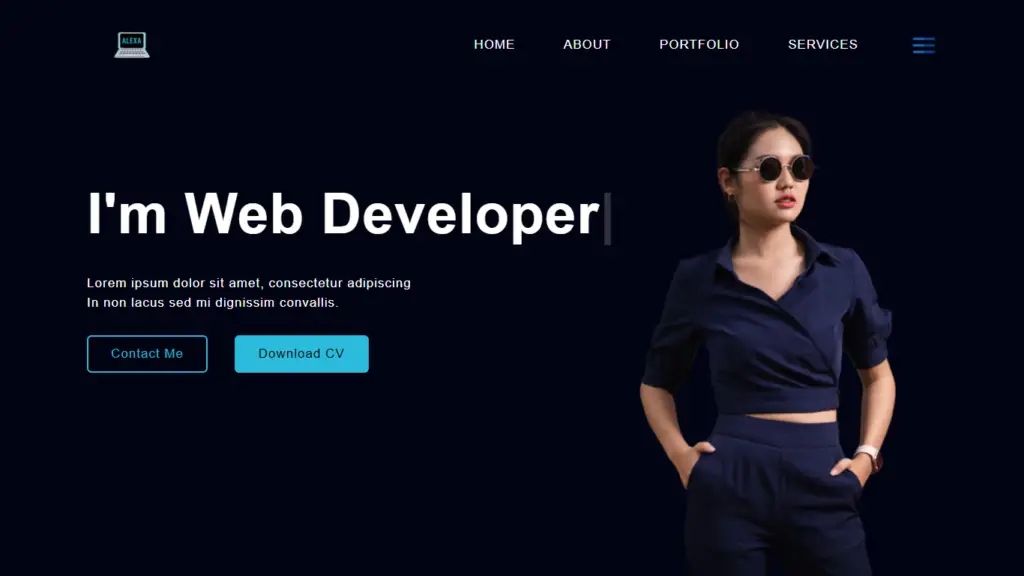Are you interested in becoming a fullstack developer? Do you aspire to master both frontend and backend technologies to build dynamic and interactive web applications? If that’s true, you’ve arrived at the correct place. In this piece, we will give you a complete guide to becoming a thriving fullstack developer. From essential skills and technologies to learning resources and career opportunities, we’ll cover everything you need to know to embark on this exciting journey.
Introduction to Fullstack Development

Fullstack development refers to the practice of building web applications that involve both frontend and backend components. A fullstack developer possesses a versatile skill set and is proficient in multiple programming languages, frameworks, and technologies. By understanding the entire web development process, fullstack developers can seamlessly integrate frontend and backend functionalities to create robust and scalable applications.
Essential Skills for Fullstack Developers
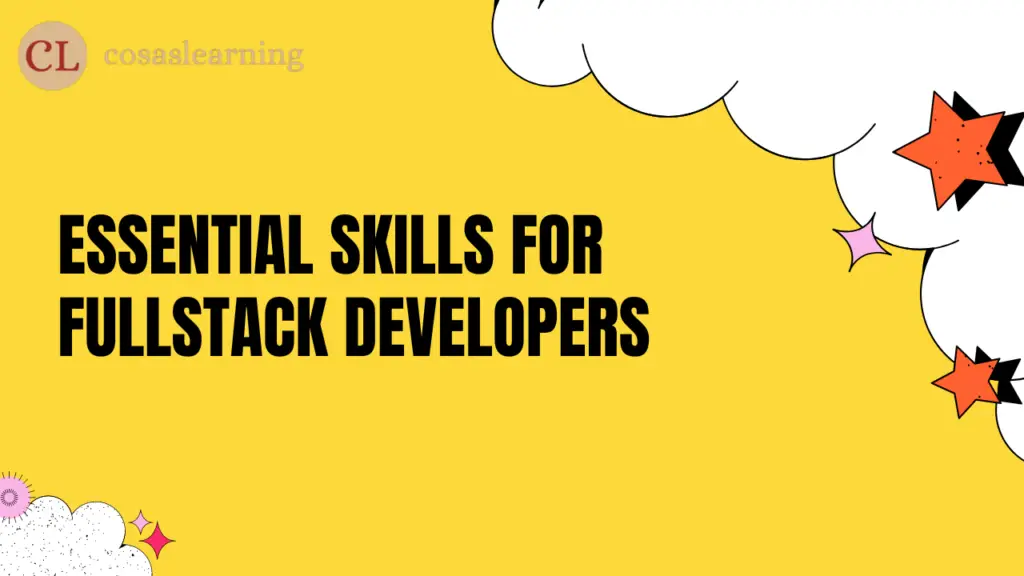
To become really good at being a fullstack developer, it’s important to learn some key skills. Now, let’s delve deeper into these skills and expand our knowledge about them.
Proficiency in HTML, CSS, and JavaScript
As a fullstack developer, you should have a strong foundation in HTML, CSS, and JavaScript—the building blocks of the web. HTML provides the structure, CSS handles the presentation, and JavaScript adds interactivity to web pages.
Backend Development Skills
Backend development involves server-side programming and data handling. To expand your abilities as a fullstack developer, it’s important to learn programming languages like Python, JavaScript, or Ruby. In addition, getting familiar with frameworks such as Node.js, Django, or Ruby on Rails can provide further enhancement to your skills. These tools enable you to build robust backend logic for your web applications.
Databases and Data Management
Understanding databases and data management is essential for fullstack developers. It’s beneficial for you as a fullstack developer to have knowledge of both relational databases like MySQL and PostgreSQL, as well as NoSQL databases like MongoDB and Redis. Moreover, learning SQL and object-relational mapping (ORM) tools will empower you to effectively interact with databases.
Version Control Systems
Version control systems, such as Git and GitHub, are crucial for collaborative development and tracking changes in your codebase. Mastering version control allows you to work seamlessly with other developers and contribute to open-source projects.
Web Servers and Hosting
Knowledge of web servers like Apache and Nginx is important for deploying web applications. Moreover, having a grasp of cloud platforms such as AWS, Azure, and Google Cloud allows you to securely and efficiently host your applications in a scalable environment.
API Integration and Web Services
API integration is a fundamental skill for fullstack developers. You should understand how to consume and build RESTful and SOAP APIs, implement authentication and authorization mechanisms, and integrate third-party services into your applications.
Frontend Technologies and Frameworks

The frontend of a web application focuses on the user interface and user experience. Here are some essential frontend technologies and frameworks to learn.
HTML and CSS
HTML (Hypertext Markup Language) is used for structuring web pages, while CSS (Cascading Style Sheets) is used for styling and layout. Mastering these foundational technologies is crucial for creating visually appealing and responsive web pages.
JavaScript
JavaScript is a powerful programming language that enables dynamic and interactive web experiences. By Learning JavaScript allows you to add functionality to your web applications, manipulate the DOM (Document Object Model), and interact with APIs.
Frontend Frameworks (React, Angular, Vue.js)
Frameworks like React, Angular, and Vue.js are frontend tools that offer efficient methods for constructing intricate web applications. These frameworks offer reusable components, state management solutions, and seamless integration with backend APIs.
Responsive Design and Mobile Development
As the use of mobile devices continues to rise, it becomes essential to design web applications that can adjust and work seamlessly on various screen sizes. Responsive design techniques and mobile development frameworks like React Native and Ionic enable you to build mobile-friendly applications.
Browser Developer Tools and Debugging
Browser developer tools are invaluable for frontend developers. These tools enable you to examine and modify HTML, CSS, and JavaScript directly in real-time. They also assist in troubleshooting problems and optimizing performance.
Backend Technologies and Frameworks
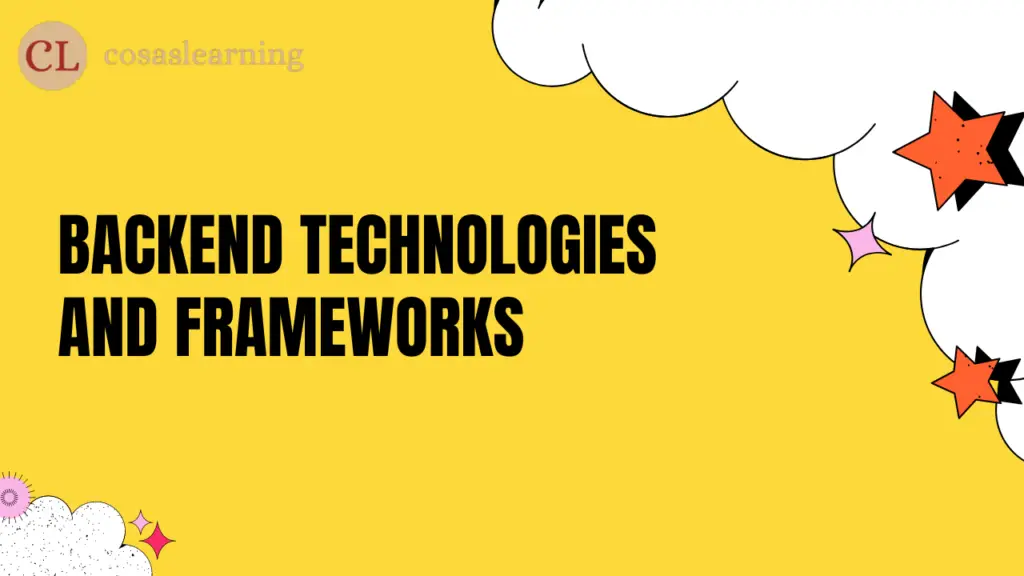
Backend technologies handle the server-side logic of web applications. Here are some key technologies and frameworks to explore.
Server-Side Programming Languages
Server-side programming languages like Python, JavaScript (Node.js), and Ruby enable you to implement business logic, handle data operations, and communicate with databases. Choose a language based on your preferences and project requirements.
Backend Frameworks
Backend frameworks provide a structured way to build server-side applications. Node.js with Express, Django (Python), and Ruby on Rails are popular frameworks that offer powerful features and simplify development.
RESTful APIs and Microservices
Understanding RESTful API design principles and microservices architecture is important for building scalable and modular applications. Learn how to design APIs that follow REST principles and leverage microservices for better scalability and maintainability.
Authentication and Authorization
Securing your web applications is crucial. Learn about authentication mechanisms like JWT (JSON Web Tokens), OAuth, and session-based authentication. Understand authorization concepts to control access to different parts of your application.
Caching and Performance Optimization
Optimizing performance is essential for delivering fast and responsive web applications. Learn caching strategies, such as using Redis for caching frequently accessed data, and explore techniques like code optimization, database indexing, and server-side rendering.
Databases and Data Management

Databases are integral to web applications for storing and retrieving data. Here are some key aspects of databases and data management to focus on.
Relational Databases
MySQL and PostgreSQL are popularly utilized relational databases for storing structured data. Learn SQL (Structured Query Language) to interact with databases effectively and understand concepts like table relationships, normalization, and indexing.
NoSQL Databases
NoSQL databases like MongoDB and Redis offer flexibility and scalability for handling data that is unstructured or semi-structured in nature. It’s important to grasp the fundamentals of NoSQL databases, which include document-oriented and key-value stores, and understand when they are preferable choices over relational databases.
Query Languages
Besides SQL, there are specialized query languages like MongoDB’s query language and Redis’ command language. Familiarize yourself with these query languages to perform advanced data operations efficiently.
Object-Relational Mapping (ORM) Tools
ORM tools like Sequelize (JavaScript), SQLAlchemy (Python), and ActiveRecord (Ruby) simplify database interactions by providing an abstraction layer between your application code and the database. Learn how to use ORM tools to handle data operations effectively.
Version Control and Collaboration

Version control systems play a crucial role in modern software development. Let’s discuss some important information about version control and collaboration that you should be aware of.
Git and GitHub
Git is the most widely used distributed version control system. Start by understanding the fundamentals of Git, which involves managing repositories, branching, merging, and resolving conflicts. Additionally, utilize platforms like GitHub or similar ones to collaborate with fellow developers, contribute to open-source projects, and demonstrate your work.
Branching and Merging Strategies
Efficient branching and merging strategies help manage complex codebases and facilitate collaboration. Understand different branching models like GitFlow and develop good practices for merging changes between branches.
Collaboration Workflows
Collaboration workflows involve tasks like code review, issue tracking, and continuous integration. Get acquainted with tools like pull requests, code reviews, and project management platforms to effectively collaborate and work in a team environment.
Continuous Integration and Deployment
Continuous integration (CI) and continuous deployment (CD) are practices that automate various stages of the build, testing, and deployment processes. Learn CI/CD tools like Jenkins, Travis CI, or GitLab CI/CD to automate routine tasks and ensure high-quality code deployment.
Web Servers and Hosting

Deploying web applications requires knowledge of web servers and hosting platforms. Here’s what you should know.
Apache and Nginx
Apache and Nginx are popular web servers that serve web pages and handle requests. Learn how to configure these servers, manage virtual hosts, and optimize performance.
Cloud Platforms
Cloud platforms like AWS (Amazon Web Services), Azure, and Google Cloud provide scalable and reliable infrastructure for hosting web applications. Familiarize yourself with cloud services like EC2, S3, and RDS to deploy and manage your applications.
Server Configuration and Security
Server configuration involves setting up security measures, optimizing performance, and managing server resources. Understand concepts like SSL/TLS certificates, firewall configurations, and server hardening to secure your applications.
Domain Management and DNS
Registering domain names, configuring DNS (Domain Name System) records, and managing domain settings are essential steps when deploying web applications. Learn how to manage domains and configure DNS settings to ensure your applications are accessible.
API Integration and Web Services
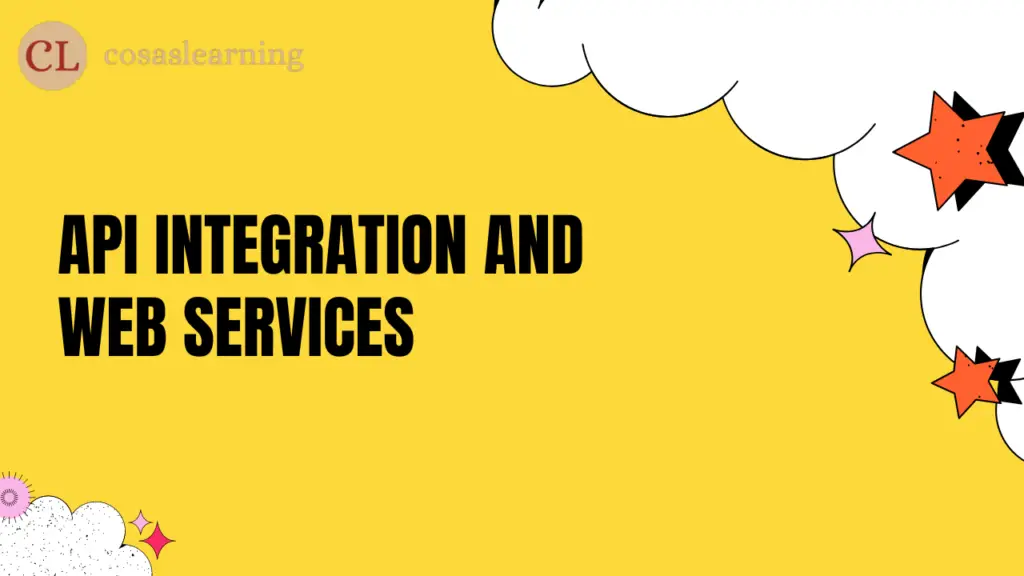
Integrating external APIs and working with web services is a common task for fullstack developers. Here’s what you should focus on.
REST and SOAP APIs
Understand the concepts of REST (Representational State Transfer) and SOAP (Simple Object Access Protocol) APIs. Learn about HTTP methods, request/response formats, and best practices for designing and consuming APIs.
Consuming and Building APIs
Learn how to consume APIs by making HTTP requests, handling responses, and parsing data. Additionally, explore frameworks and tools that help build APIs, such as Express.js, Flask (Python), or Ruby on Rails.
Authentication and Authorization
APIs often require authentication and authorization to control access to data and resources. Learn how to implement authentication mechanisms like API keys, OAuth, or JWT, and understand how to secure your API endpoints.
Third-Party Integrations
Working with third-party services and APIs is common in web development. Familiarize yourself with popular APIs like social media integrations, payment gateways, and email services. Learn how to integrate these services into your applications to extend functionality.
Learning Resources for Fullstack Developers
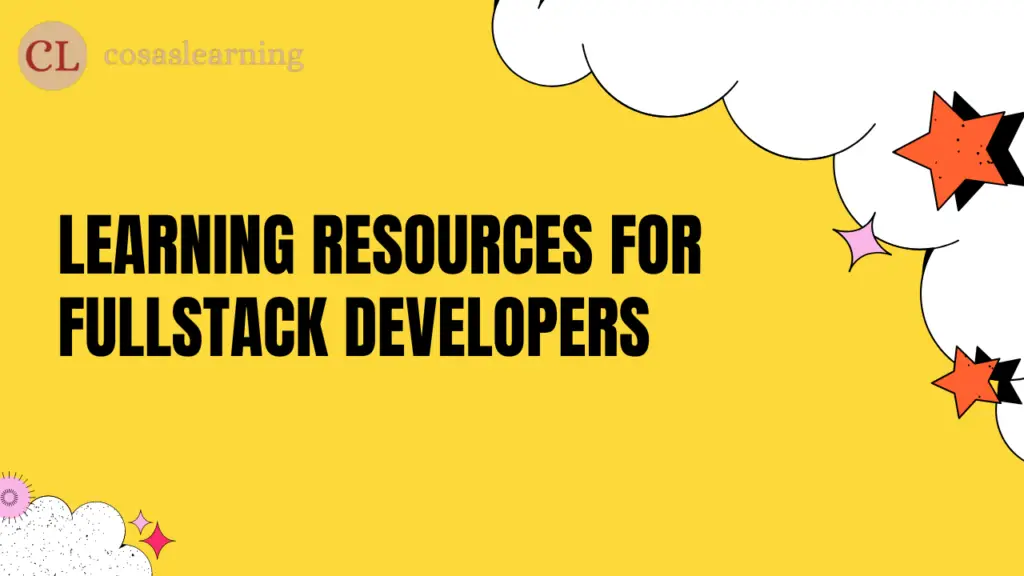
To become a proficient fullstack developer, you need access to quality learning resources. Here are some recommended resources to consider.
Online Courses and Tutorials
Online platforms like Udemy, Coursera, and freeCodeCamp offer a wide range of courses and tutorials on web development. Look for courses covering the essential technologies and frameworks mentioned earlier. Follow step-by-step tutorials to build real-world projects.
Books and eBooks
Books are a valuable resource for in-depth knowledge and reference materials. Look for books on web development, programming languages, and specific frameworks. Some popular titles include “Eloquent JavaScript,” “Flask Web Development with Python,” and “Ruby on Rails Tutorial.”
Coding Bootcamps
Coding bootcamps provide intensive and immersive learning experiences for aspiring developers. These programs focus on practical skills and often offer mentorship and project-based learning. Research reputable bootcamps that cover fullstack development and have positive reviews from alumni.
Open-Source Projects and Contributions
Engaging in open-source projects is a fantastic method to improve your skills and gain practical experience. You can explore popular open-source projects on platforms like GitHub, contribute code, and collaborate with seasoned developers. This not only helps you grasp best practices but also allows you to work in a team setting and showcase your abilities.
Career Opportunities for Fullstack Developers

Fullstack developers are in high demand in today’s tech industry. Here are some potential career opportunities to consider.
Job Roles and Responsibilities
As a fullstack developer, you can consider various job roles such as web developer, software engineer, or application developer. Your responsibilities may involve designing and building both frontend and backend components, connecting APIs, ensuring that the system can handle growth and performs well, and working together with teams from different departments.
Freelancing and Remote Work
Fullstack development provides opportunities for freelancing and remote work. Many companies and clients are looking for talented developers to work on their projects remotely. Freelancing allows you to have more flexibility in your work schedule and explore different industries and projects.
Startups and Entrepreneurship
Startups often seek fullstack developers who can handle multiple aspects of web development. Opting to join a startup can offer a dynamic and lively work environment where you can actively contribute to innovative products and be engaged in the complete development process. Additionally, fullstack developers with entrepreneurial aspirations can leverage their skills to build their own web-based products or services.
Professional Networking and Communities
Engaging with professional networks and communities is essential for career growth. Participating in tech conferences, being active in online forums, and joining local meetups are excellent methods to connect with other developers, share knowledge, and stay informed about the latest industry trends. Networking can lead to job opportunities, collaborations, and continuous learning.
Conclusion

Becoming a fullstack developer requires a comprehensive skill set in both frontend and backend technologies. By mastering HTML, CSS, JavaScript, backend programming languages, databases, version control, and web servers, you can excel in this role. Continuously learning, practicing, and gaining hands-on experience through real-world projects will further enhance your abilities.
Remember to stay up to date with the latest technologies and industry trends, and leverage the available learning resources to sharpen your skills. Regardless of whether you opt to work for a company, freelance, or pursue entrepreneurial ventures, the demand for fullstack developers guarantees a fulfilling and thrilling career in the ever-changing field of web development.
FAQs
Click Here : To Show Your Support! 😍


